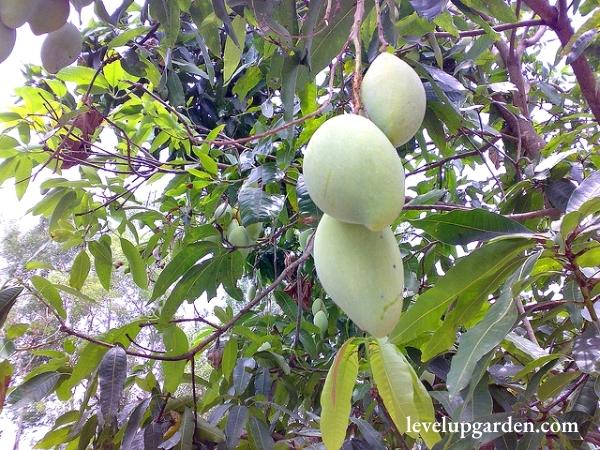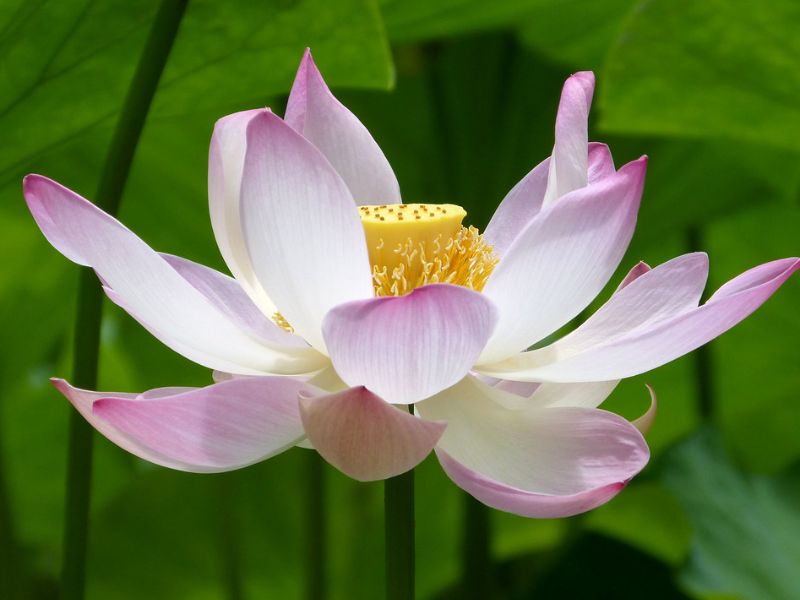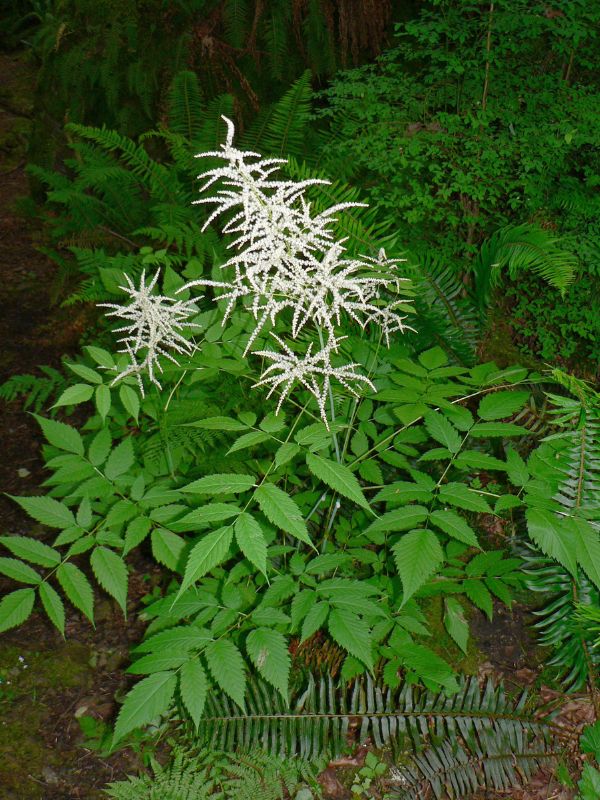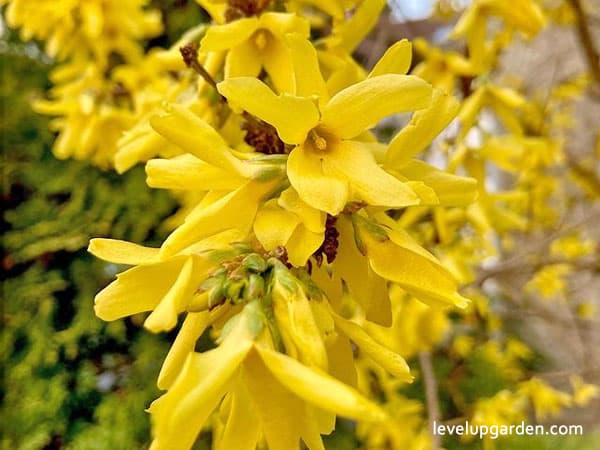The ‘Glenn’ Mango Tree (Mangifera indica ‘Glenn’) is a mango variety originally planted in Southern Florida in the 1940s. It is believed to be a descendant of the ‘Hayden’ and ‘Saigon’ varieties. The fruit resembles a standard mango, but exudes a mild peachy flavor. Glenn Mango trees can be grown almost anywhere in the United States and perform well in containers.

Glenn Mango is highly regarded for its excellent productivity and flavor. The fiberless fruit ripens quickly and reliably in late May and June, making it an early season harvest that will warm the grove for the remainder of the mango season.
It is native to Miami, the Glenn mango is a small to medium-sized tree derived from a seedling of the Hayden variety, with a dense canopy that can reach 20 feet tall. Glenn’s pleasant yellow fruit ripens from orange to red and is considered a favorite among many mango lovers. Pick them when the green skin begins to turn red and let the rest ripen in your kitchen.
I. Plant Profile – An Overview of the Glenn Mango Tree
| Common name | Glenn Mango Tree |
| Botanical Name | Mangifera indica ‘Glenn’ |
| Plant type | Edible Fruits and Nuts |
| Mature Height | 15-20 ft. |
| Mature Width | 8-10 ft. |
| Sun exposure | Full-Partial |
| Growth Rate | Fast |
| Water Requirements | Do not overwater |
II. Appearance
The Glenn Mango tree form is relatively small, with a compact and rounded crown. The tree can grow up to 20 feet tall, but is often kept below this height by regular pruning. It begins to bear fruit 3 to 4 years after planting, and then regularly produces medium to large fruits.

The fruits are oval to oblong in shape, with a rounded base and pointed tip, without a beak, and usually weighing no more than 300 to 600 grams. The rind is thin but firm and turns bright yellow when ripe. In full sun, 25% to 50% of the berries turn orange to red, but in shade they remain completely yellow. The taste is intense and sweet, the pulp is fiberless (containing monocots), and the aroma is notably pleasant.
III. Growing and Care Conditions
Glenn mango can easily be grown anywhere in the country. Once established, it is reported to tolerate temperatures as short as 30 degrees Fahrenheit. In colder regions, they can be brought indoors during the winter months. It will feel like you are in the tropics. Glenn mango is an ideal variety for home cultivation.
It produces a compact, round canopy and is disease resistant. The fruit is sweet and delicious and not as fibrous as other mango varieties. You should see 2 to 3 feet of shoots each year. However, its growth is limited by the size of the container. This exotic tree has bright green foliage and an aromatic fragrance that complements any outdoor or indoor space. It is adaptable to most soils, and it grows in full to partial sun.
Planting
Glenn Mango (Mangifera indica ‘Glenn’) is a semi-dwarf tropical tree that grows quickly and produces a delicious mango crop without taking up much space. It prefers a sunny location, this tropical tree is best suited for USDA growing zones 9-11, but can be container grown successfully in zones 4-11.

This tree can be grown outdoors in the tropics, but it can withstand cold temperatures as low as 30 degrees Fahrenheit. Another advantage of Glenn is that it is a self-fertilizing tree. This means that while a single tree can produce fruit, two nearby trees can produce a richer harvest.
It is best for the tree to get direct sunlight and warmth.. When choosing a location, whether in a container or in the ground, choose a spot with as much sunlight as possible. If you are placing them indoors, it is best to place them near a window. When planting in the ground, avoid low spots or areas that are prone to waterlogging. Mangoes prefer well-drained uplands or dry areas.
Light
Glenn mango tolerates 4 hours of partial sun per day, but will produce fruit more reliably if it receives at least 6 hours of direct sunlight per day. Make sure to choose a location that gets direct sunlight.
Watering
Mangoes are rarely thirsty, but must be watered daily for the first two weeks after planting. The most common mistake made in growing mangoes is overwatering. Water only once every three days for the first six weeks after planting.
After that, reduce it to once a week, and in winter, once every two weeks. During the hot summer months, they may need a little more water than in spring or fall. Potted mangos also need to be watered daily in the beginning. For the first 2 weeks, water when the top 3 cm of soil is dry.
Fertilizer
Mangoes are easily burnt by fertilizers high in ammonium nitrate. A natural, organic fertilizer with mycorrhizal fungi or beneficial bacteria is best. A little gardening secret that Indians used to do that works well for mangoes is to bury fish in the roots of the plant. These fish contain many nutrients essential for mango growth.
However, potted mangos benefit from a balanced fertilizer such as 10-10-10 during the growing season. During the flowering period, nitrogen should be reduced and phosphorus and potassium should be applied. But, Mangoes are known to be self-fertilizing, so, you can just let it grow in your homes.
Soil Requirements
Glenn mango will grow best in well-drained soils such as sandy, loamy, or clay soils with a pH between 5.5 and 7.5. You should avoid heavy and wet soils. It prefers deep soils because of its good rooting ability.
Pruning
Mango trees bear fruit at the ends of their branches. Pruning will increase the number of side branches, so pruning will result in more mango fruit. Mangoes are very forgiving, so don’t be afraid to prune them, but don’t go crazy and scalp them. Furthermore, the purpose of pruning is to allow the canopy to open up and allow light and air to reach the center of the tree. This will reduce the risk of fungus and disease.

The best time to prune mango trees is right after harvest, but in cooler areas it is better to prune just before the mango trees begin to flower. Potted mango trees should be pruned somewhat lightly. Just removing dead, damaged, or diseased branches and shaping the tree usually does not require a lot of pruning.
Pests and Diseases
One of the most common diseases of Glenn’s mango trees is anthracnose, caused by the bacterium ‘Colletotrichum gloeosporioides’. This manifests itself as dark leaf spots, blossom blight, and fruit rot. The fungus not only rot leaves and fruit, but also degrades the interior of the tree. If necessary, copper-based fungicides can be applied to combat the fungus. Spray just before the hot and humid season arrives.
Pollination
Mango trees are excellent self-pollinators. They produce fruit on their own, even if there are no other trees nearby. Therefore, a single “Glenn” mango tree can be potted and placed indoors and still produce a small crop of fruit each year. However, planting another tree nearby will attract pollinators, increase fertilizer, and produce more fruit. Mango trees attract a variety of pollinators, including fruit bats, bees, butterflies, and other insects.
IV. Uses
The Glenn Mango tree is known more as a fruit than as a timber tree. However, mango trees can be converted to lumber once their fruiting life is over. Timber is susceptible to damage from fungi and insects. Moreover, the wood is used for musical instruments such as ukuleles, plywood, and low-cost furniture.

V. Why should you buy this plant
Glenn mangos can be grown in containers or in the ground in large numbers, and they are unrivaled in flavor. It looks and tastes great, making it highly desirable for indoor growing. This exotic tree will complement your space with its bright green foliage and aromatic scent – a perfect contrast to its bright and lively orange-red hue.
Although growing this beautiful tropical fruit may seem difficult, you will be surprised at how easy it is to care for Glenn Mango trees. This variety was bred to produce cold-hardy plants and can bear fruit anywhere in the country.
In addition to being tolerant of a variety of climates, Glenn mango can be grown in the ground or in large planters. When grown in the ground, the tree can grow up to 20 feet tall. When grown in planters, this variety matures at 4 to 8 feet tall and remains compact. Northern residents will find it easy to move this compact yet prolific variety indoors during the cold winter months.
The Glenn Mango tree will surely add beauty and interest to your landscape. With its medium green foliage and brown bark, it makes a lush, tree-like accent from spring through late fall. As the mango tree begins to bear fruit, your garden will come alive with color and texture. It takes 100 to 150 days from flower to fruit, during which time yellow and deep red hues will be added to the garden.
The fresh and ripe mangoes are among nature’s most delicious. Their soft, juicy flesh and intoxicating aroma will make you feel like you are on a warm tropical sandy beach. If you want to use the harvested mangoes for cooking or baking, there are plenty of recipes for a variety of dishes, from sweet to salty. From mango smoothies and chutneys to mango tarts and jams, enjoy the versatility of this fruit.

In addition to being delicious, mangoes offer many health benefits. Mangoes are rich in prebiotic fiber, vitamins, minerals, and polyphenol antioxidants, making them an essential part of a healthy, holistic diet. Simply put, mangoes improve digestion, provide the body with the nutrients it needs, and protect against a variety of cancers.
Harvesting Glenn Mangos is a fun and rewarding experience. When the mangoes are fully grown, slightly hardened, and have turned from green to yellowish orange, simply pull the fruit. No special tools are needed, as the hefts break off easily.
If you are looking for a soft, rounded tree to add to your landscaping, consider the Glenn Mango Tree. These trees have an exotic appearance and diffuse a subtle sweet fragrance. These unique characteristics make them an excellent choice for outdoor spaces that include hints of tropical or Mediterranean aesthetics.
VI. FAQs
How big do Glenn mango trees get?
When grown in the ground, without pruning, they can grow up to 20 feet tall. When grown indoors or potted, Glenn Mango grows to an average height of 8 feet. The width remains an average of 8-10 feet.
Are Glenn mangos good?
The fruit has a mild peachy flavor and is sweet and delicious. They have excellent eating quality, are consistent in production, and are easy to grow.
How do you maintain a Glenn Mango tree?
Care for Glenn Mango trees is similar to that of other fruit trees. Water deeply so that the long roots are well watered. Water again when the soil surface has dried to a depth of several inches. Avoid irrigation for two months prior to flowering, and resume irrigation when the fruit begins to bear.







